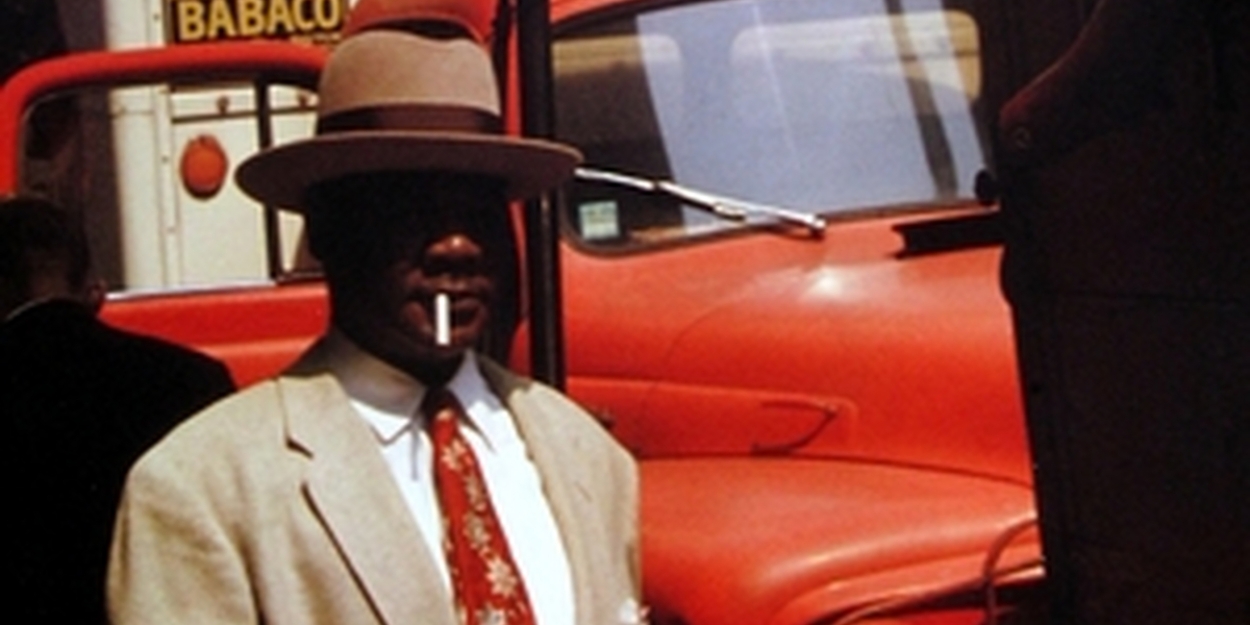SAUL LEITER: CENTENNIAL On View At Howard Greenberg Gallery Through February 10
Featuring over 40 photographs, paintings, and painted photographs, this retrospective showcases Leiter's diverse career. On view through February 10, 2024.

Celebrating the 100th anniversary of his birth, an exhibition showcasing the diverse range of Saul Leiter's career is on view at Howard Greenberg Gallery through February 10, 2024. Saul Leiter: Centennial features more than 40 photographs, paintings, and painted photographs, many which have never been on public view in the U.S. The exhibition, created in collaboration with the Saul Leiter Foundation, coincides with a new book, Saul Leiter: The Centennial Retrospective, published by Thames & Hudson.
Saul Leiter, who was born on December 3, 1923, photographed and painted nearly every day for over 60 years. He made an enormous and unique contribution to photography during a highly prolific period in New York City in the 1950s as an early pioneer of color. His abstracted forms and radically innovative compositions have a painterly quality that stands out from the work of his New York School contemporaries. Often, he found inspiration within a few blocks of his apartment in lower Manhattan, seeking beauty in the ordinary, and capturing intimate moments, both indoors and on the streets. The exhibition at Howard Greenberg Gallery surveys his black-and-white as well as his color photographs including portraiture and cityscapes from the 1940s-1960s, his paintings (on which he worked until the end of his life) including abstract watercolors and painted photographs, and his fashion photography from Harper's Bazaar circa 1960.
Anne Morin, who curated the recent exhibition on Saul Leiter at Les Rencontres de la Photographie in Arles, France, and is the director of diChroma photography in Madrid, noted: “Paintings, photographs, color, black and white, street photography, fashion photography… Approaching the work of Saul Leiter is complex. Because of the cross-disciplinary dimension of his work, the artist/photographer occupies a very special place in the history of photography. As a collector of minute fragments of the world around him, Leiter wove a body of work of extraordinary density. Known as one of the great masters of mid-century color photography, his body of work extends far beyond this territory.”
Saul Leiter (1923-2013) was born in Pittsburgh, the son of a rabbi who was a distinguished Talmudic scholar. In 1946, he moved to New York City to pursue his painting. Shortly after his arrival in New York he met the Abstract Expressionist painter Richard Pousette-Dart, who was experimenting with photography. Leiter's friendship with Pousette-Dart, and soon after with W. Eugene Smith, and the photography exhibitions he saw in New York, particularly Henri Cartier-Bresson at the Museum of Modern Art in 1947, inspired his growing interest in photography.
Edward Steichen included Leiter's black-and-white photographs in the exhibition Always the Young Strangers at the Museum of Modern Art in 1953. In the late 1950s the art director Henry Wolf published Leiter's color fashion work in Esquire and later in Harper's Bazaar. Leiter continued to work as a fashion photographer for the next 20 years and was published in Show, Elle, British Vogue, Queen, and Nova.
In the early 1980s Leiter was faced with financial difficulties that forced the closure of his Fifth Avenue commercial studio. For the next two decades he lived and worked almost in obscurity. In 2006, with the help of writer/curator Martin Harrison and Howard Greenberg Gallery, the groundbreaking monograph Saul Leiter: Early Color was published by Steidl in Germany. The “little” book became an overnight sensation with worldwide distribution and firmly established Leiter as an early pioneer in the history of color photography. In 2006, the Milwaukee Museum of Art held the first U.S. museum show of Leiter's photographs.
Leiter's work has been prominently featured in solo museum and gallery shows in the U.S. and Europe. His work is in the collections of the Museum of Fine Arts, Houston; the Art Institute of Chicago; the Baltimore Museum of Art; the Victoria and Albert Museum; the National Gallery of Australia; the Whitney Museum of American Art; the Milwaukee Art Museum; and the Yale University Art Gallery, among others.
The Saul Leiter Foundation, founded in 2014, is dedicated to preserving Leiter's art and legacy. Directed by Margit Erb and Michael Parillo, the foundation maintains Leiter's vast archive and organizes educational programs, exhibitions, and books. Saul Leiter: The Centennial Retrospective presents iconic Leiter works as well as discoveries made in the 10 years since the artist passed away. The SLF is working toward completing a catalogue raisonné to be made available for study by students, curators, writers, and art professionals. For more information, visit saulleiterfoundation.org.
Since its inception in New York more than 40 years ago, Howard Greenberg Gallery has built a vast and ever-changing collection of some of the most important photographs in the medium. The Gallery's collection acts as a living history of photography, offering genres and styles from Pictorialism to Modernism, in addition to contemporary photography and images conceived for industry, advertising, and fashion.
Formerly a photographer and founder of The Center for Photography in Woodstock in 1977, Howard Greenberg has been one of a small group of gallerists, curators, and historians responsible for the creation and development of the modern market for photography. Howard Greenberg Gallery—founded in 1981 and originally known as Photofind—was the first to consistently exhibit photojournalism and street photography, now accepted as important components of photographic art. The Gallery is located at two 57th Street locations: an exhibition space on the 8th floor of the Fuller Building at 41 East 57th Street; and an entire floor at 32 East 57th Street, directly across from the Fuller Building, to house, manage, and present its vast archive of over 40,000 prints.
For more information, contact 212-334-0010 or info@howardgreenberg.com, or visit www.howardgreenberg.com.
Videos

